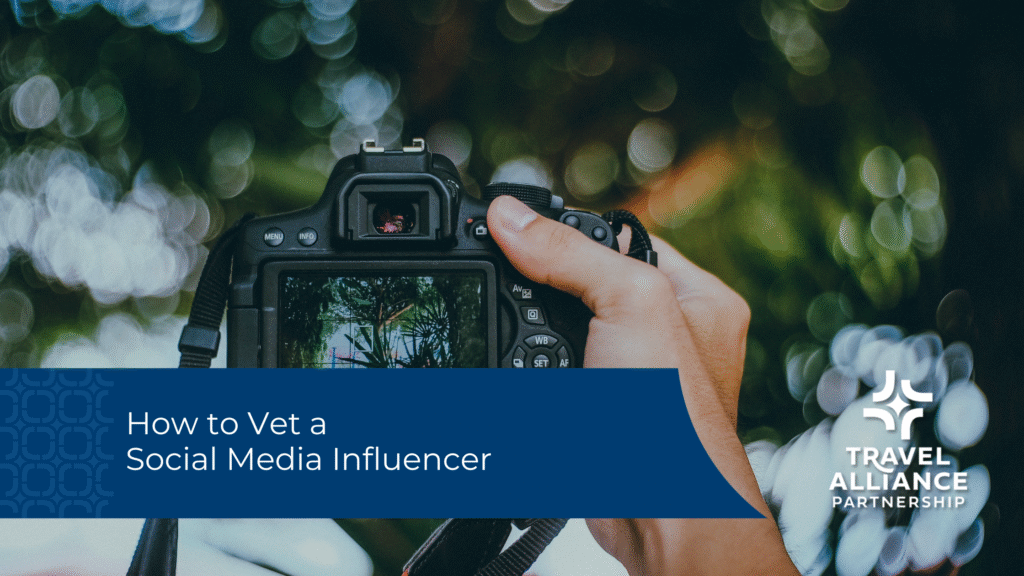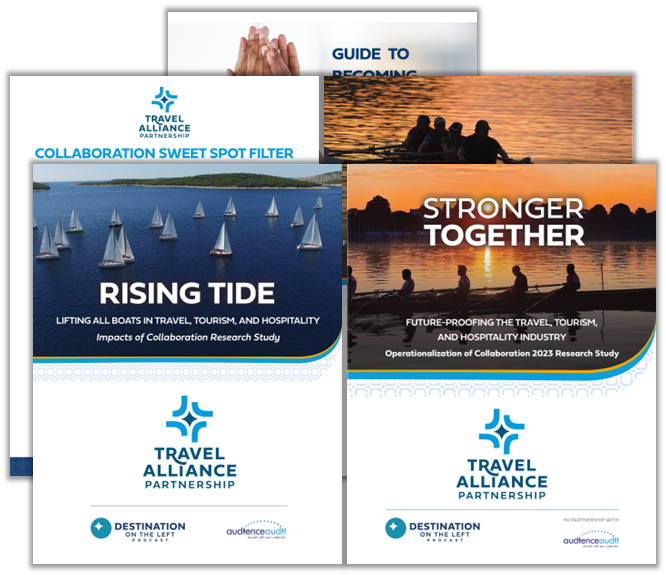How to Vet a Social Media Influencer
The media landscape has shifted from relying solely on traditional journalists and publications to partnering with bloggers, vloggers and social media influencers of all shapes and sizes. Travelers are interested in seeing where other people are visiting, what dishes they’re eating and what awesome experiences they’re having – so it only makes sense that destinations are partnering with travel, food and lifestyles influencers more often as part of their marketing strategy.
Read our blog for a quick refresher on what a social media influencer is and how destinations can successfully work with them.
There are a variety of ways that you may find yourself communicating with content creators. Even if you are not proactively connecting with influencers, they may reach out to your organization directly via a DM (direct message) or email, come through a PR agency or state organization, or be part of a pre- or post-FAM tied to a travel conference or show. No matter how an influencer comes across your desk, it is important to figure out whether it is worth spending your time and resources on working with them.
Here are a few ways to determine if a social media influencer is the right partner for your destination, restaurant or attraction.

Partnership Logistics
Are the vibes right?
Before getting too far into planning, make sure the opportunity passes your gut-check. At service level, do their social media accounts and engagement seem legitimate? Has correspondence felt customized or cookie-cutter? The fastest way to tell if a partnership will work is by scheduling a quick call. We ask a series of standard questions to understand if the influencer is genuinely interested and excited about a destination – such as:
- What do you already know about the destination?
- What inspired you to reach out about a partnership with the destination?
- What did you have in mind for this partnership? (Specific angles, interests, deliverables, etc.)
What is the budget?
Some influencers are interested in trading content creation for a hosted visit. Even so, there are costs involved like overnight accommodations, activities and experiences, food and travel expenses. Other influencers are looking for paid partnerships. In this case, you can approach the discussion in one of three ways:
- Provide your budget for the partnership and ask what content they can provide for that amount.
- Provide your expectations for deliverables and ask how much they would charge to create them.
- Ask if they have budget minimums, standard packages or similar campaigns that they can share as a starting point.
Discussions about money can be uncomfortable, but it’s important to be open and honest. If you are not considering paid partnerships at all, say that upfront. If you have a price in mind, share it. And if an influencer’s proposed budget is way out of your range, tell them. Budgets and deliverables are usually open to negotiation, but sometimes the gap in expectations is too wide to overcome.
What are the deliverables?
An influencer should have a general idea of what they will produce before, during and after the trip. During early discussions, find out what social media platforms they plan to post on, the type of content they’re looking to produce and how often they will post (once a day, at every stop, etc.). Understand if they’re going to cover everything they experience, or a select few stops. Make sure the deliverables align with your campaign’s focus and key messages, and provide value to both you and the influencer.
Audience Considerations
How many followers do they have?
This is the first indication whether you want to spend your time and resources on the partnership. However, we’ve said it before and we’ll say it again – a large audience is not automatically better than a small audience. Working with microinfluencers helps you build relationships as their popularity, and following, grows. Plus, if you have a specific product and they have a niche following, it’s like you’re talking directly to your target audience.
You can look up influencers on Socialblade to view their follower count over time. A large jump in followers over a short period of time could mean that they purchased them.
Who is their audience?
The point of working with an influencer is to get to their following, so make sure they are reaching your target audience. Scroll through their followers to see who they are. If you’re hosting them for a family-friendly FAM or showing off your beautiful waterfalls, you will want their audience to consist of moms or outdoor-lovers, respectively. How many of their followers are brands, destinations or other travel influencers? (Common phrases in their handles may be: travel, traveler, nomad, wander, etc.) Do any seem like follower bots or fake accounts? These can be red flags. Don’t be afraid to ask where their followers come from.
Are their followers engaging with content?
It doesn’t matter the size of their audience if no one is engaging with their posts. Look at how many likes, comments, shares, views, etc. that their posts get. The engagement should be proportional to the number of followers. For example, it’s not a good sign if they have 50,000 followers but their posts receive under 100 likes.
Scroll through comments to see if people are leaving quality questions and insights. Here are some red flags that indicate users are commenting simply to boost engagement numbers:
- Most comments are saying the same or similar things
- Users are only leaving emojis
- The same few people are commenting on every post
Post Considerations
How frequently do they post?
You want to partner with someone whose channel has momentum, not one that has been stagnant. Instagram and TikTok influencers should post every couple of days, if not every day. Bloggers should post an article every couple of weeks (and share them across their platforms!). Podcasts and email newsletters should follow a standard cadence.
What type of content do they post?
Does it align with your destination or attraction? If most of their Instagram posts are of beaches and waterfalls and your destination has no water, it’s probably not a good fit. Or if your menu is filled with delicious health food and the influencer is known for their junk-food highlights, you may want to pass on the opportunity. Do they take beautiful landscapes of state parks, up-close details of a farmer’s market, or is it simply in the background of their OOTD (outfit of the day) selfie?
Are they sharing quality posts?
Make sure their channels are well-maintained and look and sound professional. Ask yourself: would I want these posts representing my destination? Spelling errors, incorrect grammar or poor audio are all turn-offs. Are their captions engaging, or lack details that will entice a visitor to plan a trip? Pay attention to titles or captions that over-promise or seem like clickbait. How do they show off a destination? Look for photos and videos that are well-lit, well-balanced, in focus and tell a story.
Next Steps to Partner with an Influencer
Once you determine you would like to work with an influencer, we recommend creating an influencer agreement to document the agreed-upon details. Have both parties review and sign, so that everyone is on the same page regarding the budget, covered costs, deliverables and timelines.
If your organization is ready to harness the power of influencer marketing, here are some more resources that can help you get started. If you’d like an extra hand with the process, reach out to us – we would love to work together!
Author
Related Posts
Owned Media Foundations: How Your Website, Email, and Blog Support Tourism Marketing
Owned media is exactly what it sounds like — it’s yours. Your website, your email list, your blog — these are the channels where you…
